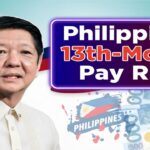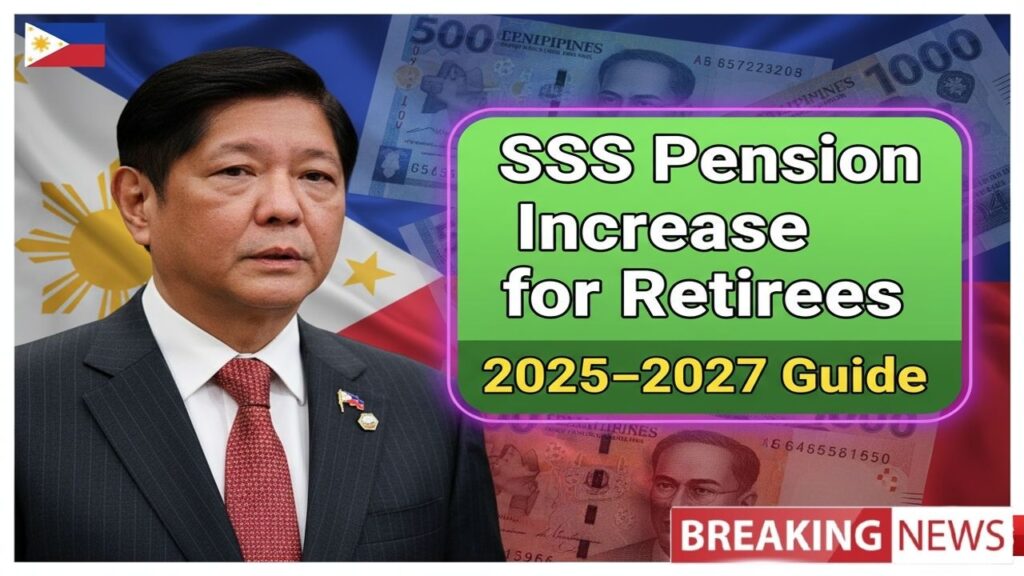Many Filipinos face financial strain after reaching their senior years. Healthcare needs increase, prices rise, and income often declines. To protect the most vulnerable, the government operates a social pension that gives a modest allowance to indigent senior citizens. In recent months, online posts have circulated about a supposed ₱6,000 monthly senior pension. It is important to separate fact from speculation. At present, the established program remains the Universal Social Pension for indigent seniors, with a baseline stipend of ₱500 per month. Proposals to raise the benefit exist in public discussions, but they do not carry legal effect until a law, budget allocation, or official directive is issued and implemented.
Table of Contents
This guide explains what the current program provides, who qualifies, how payments are scheduled, what documents are needed, and how seniors can keep track of updates. It also addresses the ₱6,000 claim and outlines realistic steps families can take while waiting for any verified increase.
What Is the Universal Social Pension

The Universal Social Pension is a safety net for seniors who are poor, vulnerable, and without reliable sources of income. The allowance is modest, but it helps cover essentials like food, medicine, and transport. Beneficiaries are identified through local social welfare offices that assess indigency and verify that the applicant does not receive an existing pension from SSS or GSIS. Although the word universal appears in the name used by many writers, coverage in practice is not for all seniors. It is targeted to indigent seniors who meet the criteria set by the program and the annual budget.
Quick Summary
Item |
Details |
|---|---|
Program name |
Universal Social Pension for Indigent Senior Citizens |
Administered by |
Department of Social Welfare and Development |
Country |
Philippines |
Current monthly benefit |
₱500 per eligible indigent senior |
Proposed amount often mentioned |
₱6,000 per month but not approved and not implemented |
Payment frequency |
Monthly or as scheduled by LGUs and DSWD payout partners |
Who it targets |
Indigent seniors with no regular income and no other pension |
How to apply |
Through the City or Municipal Social Welfare and Development Office, with barangay endorsement |
Official site |
Clarifying the ₱6,000 Monthly Pension Claim
The amount of ₱6,000 per month has been widely shared online as a new pension for all seniors. There is no active nationwide program that credits ₱6,000 monthly to every senior citizen. The standard benefit under the existing social pension remains ₱500 per month, subject to available funds and verified eligibility. Proposals to increase the amount can move through policy discussions and legislative processes. Until an official issuance confirms a new rate and rollout plan, the figure of ₱6,000 should be treated as unconfirmed. Seniors and families are encouraged to rely on updates from DSWD, LGUs, and official advisories.
Eligibility Criteria
While the final screening rests with DSWD and the LGU social welfare office, the typical eligibility profile includes the following elements.
- Filipino citizen and permanent resident of the barangay listed in the application
- Senior citizen aged 60 or older at the time of application
- Indigent status with no regular income or financial support
- Not receiving a pension from SSS, GSIS, or similar programs
- Priority to seniors who are frail, living alone, with disability, or caring for dependents
These criteria may be refined in local guidelines or through program updates, but the intent is consistent. The benefit targets seniors who need it most and who lack alternative support.
How to Apply
Applications are commonly handled through the City or Municipal Social Welfare and Development Office. Here is a practical outline.
- Visit your barangay hall for initial guidance and endorsement to your LGU social welfare office
- Prepare documents that prove age, identity, residence, and economic status
- Submit the application and undergo assessment or home visit if required
- Wait for inclusion in the official list once the LGU consolidates and validates beneficiaries
- Receive payout instructions once the cycle is scheduled for your barangay or payout center
Processing times depend on validation workloads and budget availability. There can be queues in areas with many applicants or limited slots. Keep photocopies of every document you submit and take note of reference numbers issued to you.
Documents You May Need
- Senior citizen ID or any government ID with birth date
- Birth certificate or PSA advisory on birth if available
- Barangay certificate of residency
- Proof of no pension such as a certification or sworn statement as required by the LGU
- Medical summary if you have a disability or chronic illness
- Two recent ID photos if requested by your LGU
- Duly accomplished application form from the social welfare office
LGUs may add other papers for verification. Always ask for an official checklist to avoid repeat visits.
Payment Schedule and Modes
Payouts are monthly or scheduled by the LGU and its payout partners. In many localities the benefit is released through any of the following.
- Cash payouts at designated barangay or municipal payout points
- Cash cards or partner remittance centers where arrangements are in place
- Door to door delivery for bedridden or vulnerable seniors as coordinated by the LGU
Bring your ID and the payout stub or claim slip when collecting. If you miss the schedule due to illness or mobility issues, contact the social welfare office to ask about a special arrangement or the next cycle.
What To Do If You Are Not On The List
Seniors sometimes find that their name is missing from the posted list. Start with your barangay council and the social welfare office to confirm whether your application is still under assessment or whether your documents are incomplete. If you previously received the benefit and it stopped, check whether a revalidation cycle required updated records. Prepare proofs of identity and residency and ask for the steps to appeal or reapply. Keeping copies of your previous claim slips, IDs, and certifications will help the staff locate your file quickly.
Practical Tips While Waiting For Possible Adjustments
- Keep your contact details current so you can receive payout advisories
- File applications early in the year when validation cycles begin
- Retain medical receipts and prescriptions that show continuing needs
- Coordinate with family members who can assist during payout days
- Monitor notices posted by the LGU and DSWD to avoid misinformation
Key Takeaways
- The active social pension for indigent seniors is ₱500 per month
- The much discussed ₱6,000 monthly amount is not approved and not implemented
- Eligibility focuses on indigency and the absence of any other pension
- Applications are processed through LGU social welfare offices with barangay support
- Payment schedules vary by locality and partner arrangements
Frequently Asked Questions
1. Is the ₱6,000 monthly senior pension already available
No. The ₱6,000 figure is not an approved or implemented nationwide benefit. The current stipend under the social pension program is ₱500 per month for eligible indigent seniors.
2. Can a senior receiving SSS or GSIS pension also get the social pension
The social pension targets seniors without other regular pensions. If you already receive a pension from SSS or GSIS, you are generally not eligible for the social pension.
3. Where and how do I apply
Apply through your City or Municipal Social Welfare and Development Office with a barangay endorsement. Submit required documents and complete the assessment process.
4. How are payment dates set
Payment dates are scheduled by the LGU and DSWD payout partners. Check postings at the barangay hall, LGU page, or the social welfare office for your batch schedule.
5. What should I do if I missed my payout or did not receive the allowance
Bring your ID and reference documents to the social welfare office. Ask whether a make up payout is available or whether your records need updating for the next cycle.
Official Website
For advisories, guidelines, and program announcements, visit the Department of Social Welfare and Development.
https://www.dswd.gov.ph
For More Information Click HERE











